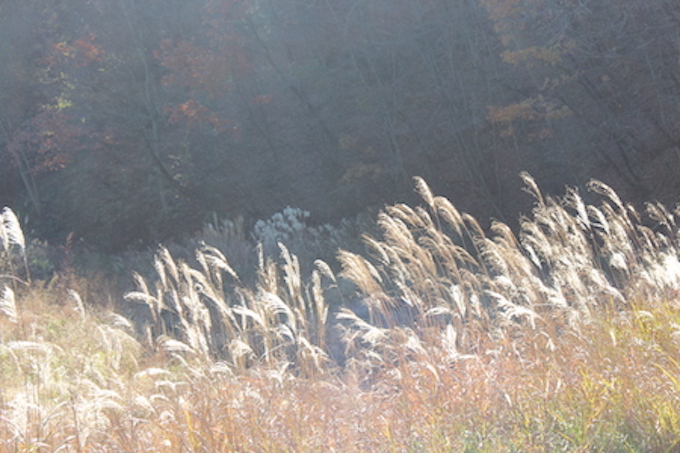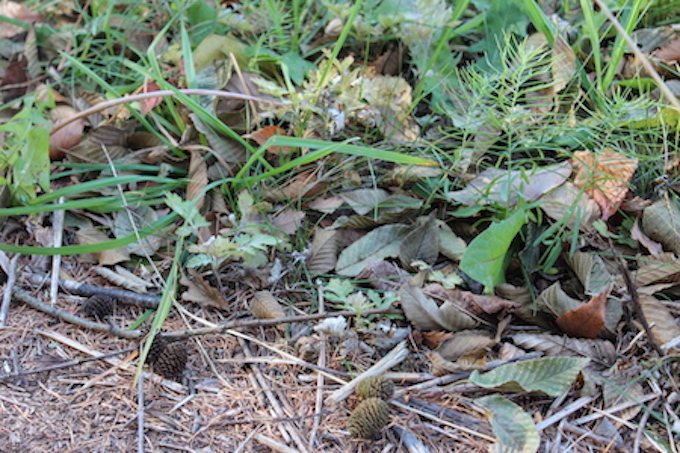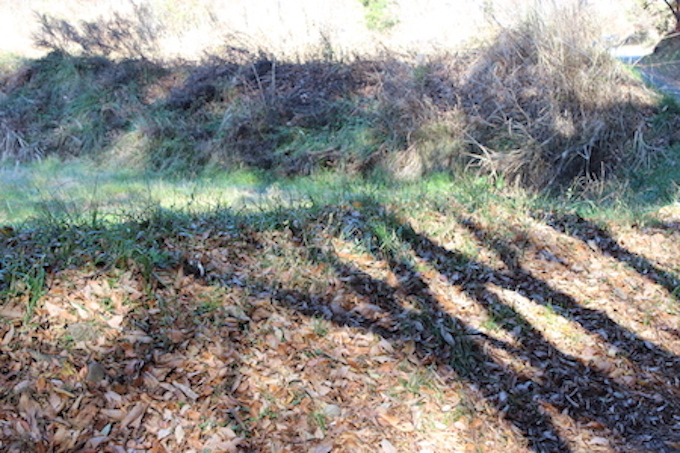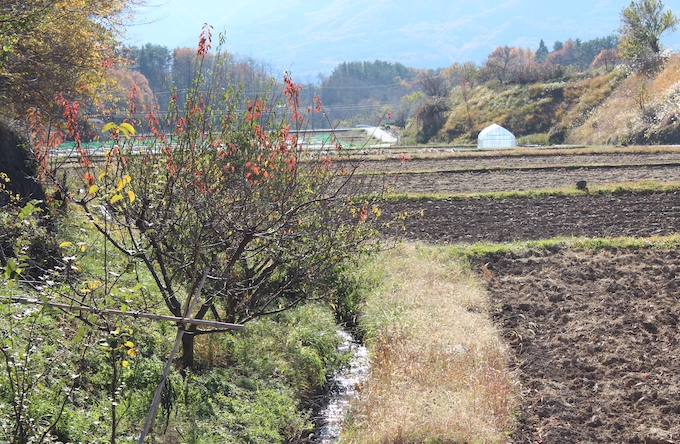
In my head, there is a dye map of Kamakura where I lived before.
I want to dye with plants that are familiar as far as possible, so every time I dye with plants from the garden at home or plants that I encountered while taking a walk around the neighbours, the places and the colours were recorded on the map in my head.
For instance, there is a quiet path where mugwort grow in early spring, and I know there is a house which has magnolia and osmanthus fragrans in the garden and the owner trims the green leaves in early Aug every year.
I found a marshy land where lots of acorns fall in autumn, or it was when I paid a visit to a temple that I found out about pruning the branches of Ume (Japanese apricot) trees before the flowering.
In addition, the places where I can find harlequin glorybower, Japanese alder, stachyurus praecox, bayberry, sweet viburnum, which all work splendidly as dye too, are recorded as well.
However, in the harvest season, it is often the case that when I go to the aimed place in high spirits to gather the nuts that have fallen, the trees have been cut down before I knew, so regular updates are also needed.

Actually, during my life in Kamakura for 14 years, I moved 5 times just in the city.
If anything, it was more for the house owner’s reasons and not my intention, and sometimes I felt troublesome to take a set of weaving implements with me.
However, after repeating the house-moving several times, I realised that my dye map had been expanding.
Every time I moved, my walk route changed, and I came across new plants too.
I lived both on the mountain side and the sea side of Kamakura, but the vegetation was completely different.
When I moved from the house on the mountain side to on the sea side and moved the mountain grass that I had grown in my garden too, but saw them die shortly because they could not tolerate the sea breeze, I regretted myself for taking them with me.
While there are delicate plants that grow in the mountain, evergreens that are strong in spite of the sea breeze, match with the sea.
Surprisingly, cute colours appear from the thick green leaves of evergreen trees.
The places with plants and colours drawn on the map in my head, I feel like they are “my garden”.

The other day, I went to hear a lecture by Mr. Paul Smither, a landscape designer and horticulturist, who lives at the foot of Yatsugatake.
Mr. Smither was born and raised in UK and has been in Japan for about 20 years. He spoke fluent Japanese and talked about the gardens in UK, the charm of plants that grow in the wild in Yatsugatake, and his current project with humour.
The topic of the lecture was “Make a garden of wild grass” and he mentioned repeatedly that “we should not put fertiliser”.
If the wild grass is right for the land feature, whether it’s sunny, dark, damp or dry, no fertiliser or disinfection is required, so he said.
Nothing will survive if it is not right for the land and he warns that if we try to keep them by putting fertiliser and disinfection, the wild grass that should originally exist will disappear.
That reminded me of my bitter experience too. I planted seedlings of flowers and plants of my choice in the garden and watered them every day and sometimes put fertiliser, but the more I took care of them the more they became weakened.
The plants that have meaning to exist in the land are full of life.
The gardens that Mr. Smither creates are beautiful because the plants are sustainable in harmony with others and resonate with each other.
And it seems that garden he refers to is not just the place such as gardens at home where he is asked to design.
He goes into the mountains and the forests, gather wild grass seeds, and gradually multiplying the wild grass that is being lost.

You can start from a single seed of wild grass.
I thought I want to start making a wild grass garden at home.
If wild grass grows and spreads in the garden of each house, and the plants that should be there on the land are protected, it may be better to loosen the boundaries of garden.
It needs no saying that I have started to draw the dye map of the foot of Yatsugatake in my head too.
